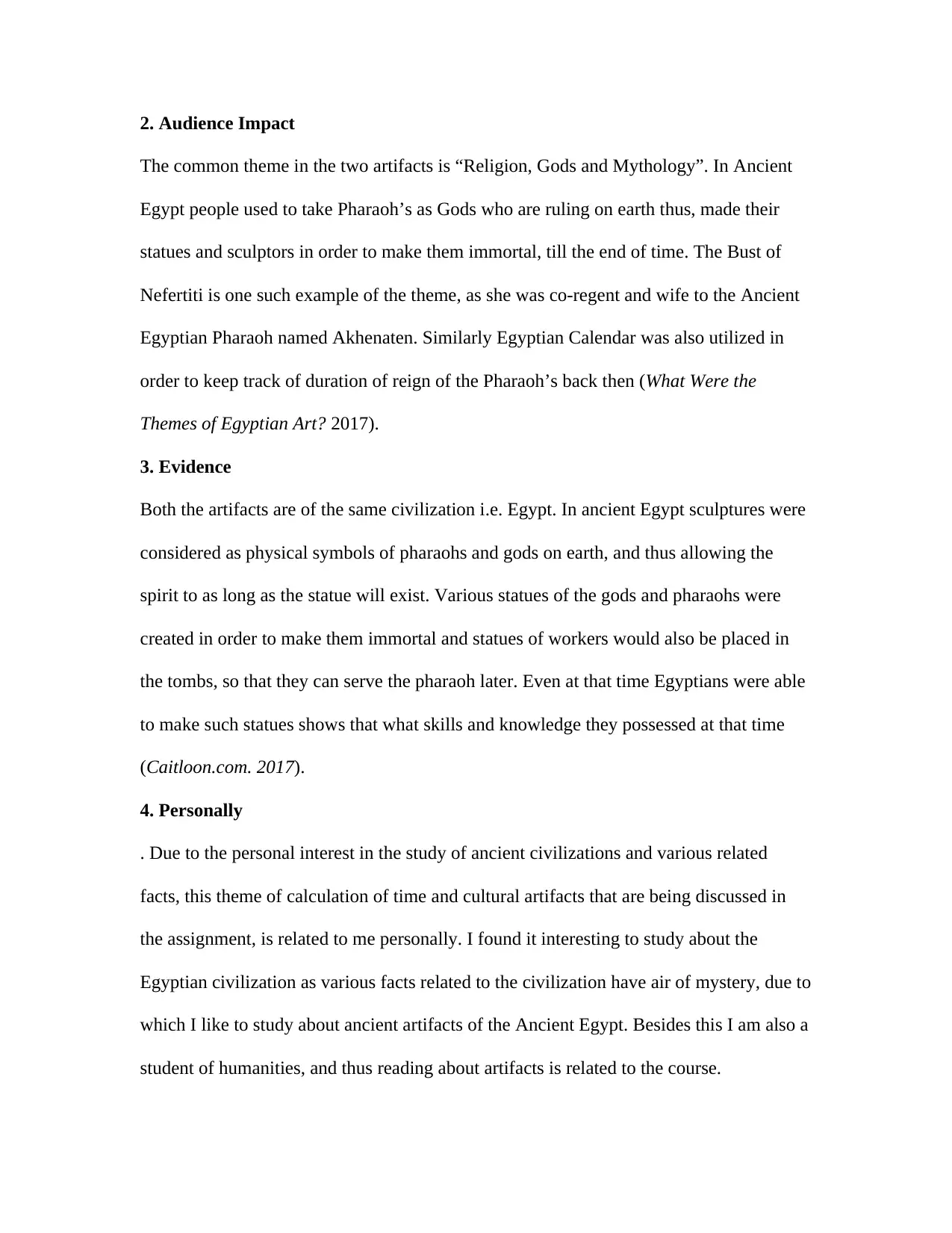Analysis of Ancient Egyptian Artifacts: A HUM200 Presentation
VerifiedAdded on 2019/09/18
|3
|795
|286
Presentation
AI Summary
This presentation, prepared by Tania Farhat for HUM200, focuses on two significant artifacts from ancient Egypt: the Bust of Nefertiti and the Egyptian Calendar. The presentation provides an overview of the artifacts, discussing their historical context, creation, and cultural impact. It highlights the common theme of "Religion, Gods, and Mythology," explaining how these artifacts reflect the ancient Egyptians' beliefs and societal structures, including the reverence for pharaohs and the importance of tracking time for religious and agricultural purposes. The analysis includes evidence supporting the artifacts' significance and explains their personal relevance to the student's interest in ancient civilizations and the humanities. The presentation also considers the impact of these artifacts on the field of archaeology and suggests resources for further research, such as ancient-egypt-online.com, to facilitate a deeper understanding of the subject matter.
1 out of 3










![[object Object]](/_next/static/media/star-bottom.7253800d.svg)